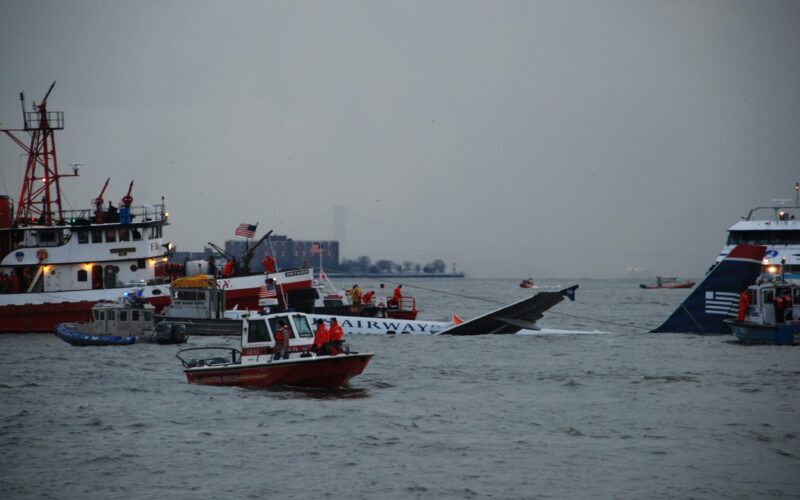Today marks the 13th anniversary of what is known as the ‘Miracle on the Hudson’, when on January 15, 2009, a US Airways A320 landed on the Hudson River in New York City. 13 years and one Clint Eastwood movie later, Captain Chesley “Sully” Sullenberger remains a hero, and his deed has become one of the most admired in aviation history.
It all started when the US Airways Airbus A320-200, registered N106US, took off around 15:25 local time from New York La Guardia (LGA) to carry out flight US-1549 to Charlotte Douglas International Airport (CLT), in North Carolina. For the first two minutes, everything seemed normal.
“Birds,” the captain warned his co-pilot, First Officer Jeffrey B. Skiles, a second before the airplane struck the flock, sucking two geese into each engine and causing both to lose power. At a mere 3,200 feet (1km) altitude, the odds were against Sully turning back and land in his airport of departure, the option given by the La Guardia departure controller. “Unable, we may end up in Hudson,” the captain answered – a premonitory sentence that has since become famous.
In the next two minutes that followed this sentence, the captain and his first officer showed incredible calm and discipline. After considering landing at the small Teterboro Airport (TEB) in New Jersey, the crew eventually decided to land on the icy Hudson River.
It took only 20 minutes after the impact for the 150 passengers and five crew members to be evacuated and be picked up, mostly by tourist boats that were cruising the Hudson.
This moment was immortalized by Janis Krums, a passenger on one of the ferries, who took a picture of the plane and posted it on Twitter (which was a very new platform at the time). It was this tweet, plus its picture, that alerted global media to the incident.
While 78 people were injured, most only received superficial wounds. In a report on May 4, 2010, the National Transportation Safety Board (NTSB) praised “the decision-making of the flight crew members and their crew resource management during the accident sequence,” along with the cabin crew’s behavior during the evacuation.
“Once the birds and the airplane collided and the accident became inevitable, so many things went right,” said NTSB Chairman Deborah A.P. Hersman. “This is a great example of the professionalism of the crew members, air traffic controllers and emergency responders who all played a role in preserving the safety of everyone aboard.”
While the media soon named this event the ‘Miracle on Hudson’, reports indicate that the survival of all people on board the aircraft had little to do with luck or fate. Instead, it was mostly due to the professionalism of the people in charge.
After 30 years, Sully’s career as a pilot came to an end in 2010. From then on, he took on an active role as a consultant in various aviation institutions. On June 19, 2019, he was heard by the United States House Subcommittee on Aviation to comment on the two Boeing 737 MAX crashes that resulted in the deaths of 346 people. The retired pilot criticized the FAA’s lack of oversight in the certification processes of new aircraft.
On June 15, 2021, President of the United States Joe Biden named Sully as the US representative on the Council of the International Civil Aviation Organization.
To follow this incredible event through the words of its main protagonist, check out this Twitter thread made by Captain “Sully” Sullenberger himself.

